Root is a breathtaking journey into a vibrant and whimsical woodland world, where the tapestry of nature weaves together a tale of strategy, intrigue, and adorable critters. In this stunning board game, you become part of an enchanting forest inhabited by anthropomorphic animals, each faction vying for control and dominance.
From the charming Marquise de Cat to the cunning Vagabond and the valiant Eyrie Dynasty, every faction exudes personality and charm, creating a captivating narrative tapestry.
What’s included in Root?
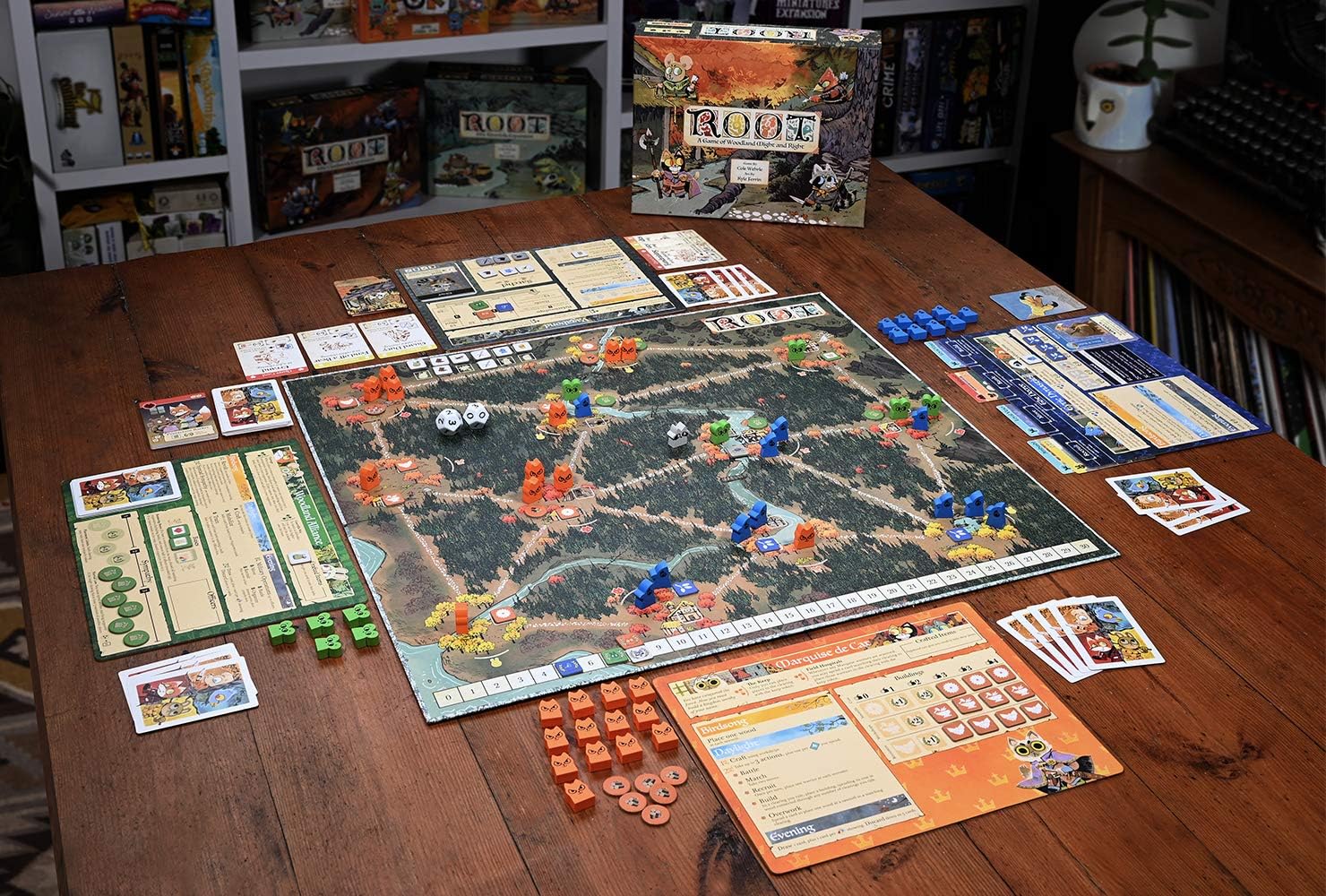
- Game Board: The board represents the woodland with various clearings, paths, and important locations.
- Faction Boards: Each player selects a faction and takes the corresponding faction board, markers, and cards.
- Tokens: Tokens include warriors, buildings, and tokens specific to each faction.
- Woodland Alliance Tokens: These are used if you’re playing the Woodland Alliance faction.
- Event Cards: These cards introduce events that affect the game.
- Crafting Cards: Used by certain factions for special abilities.
- Dice: Dice are used for battles and other actions.
How to play Root
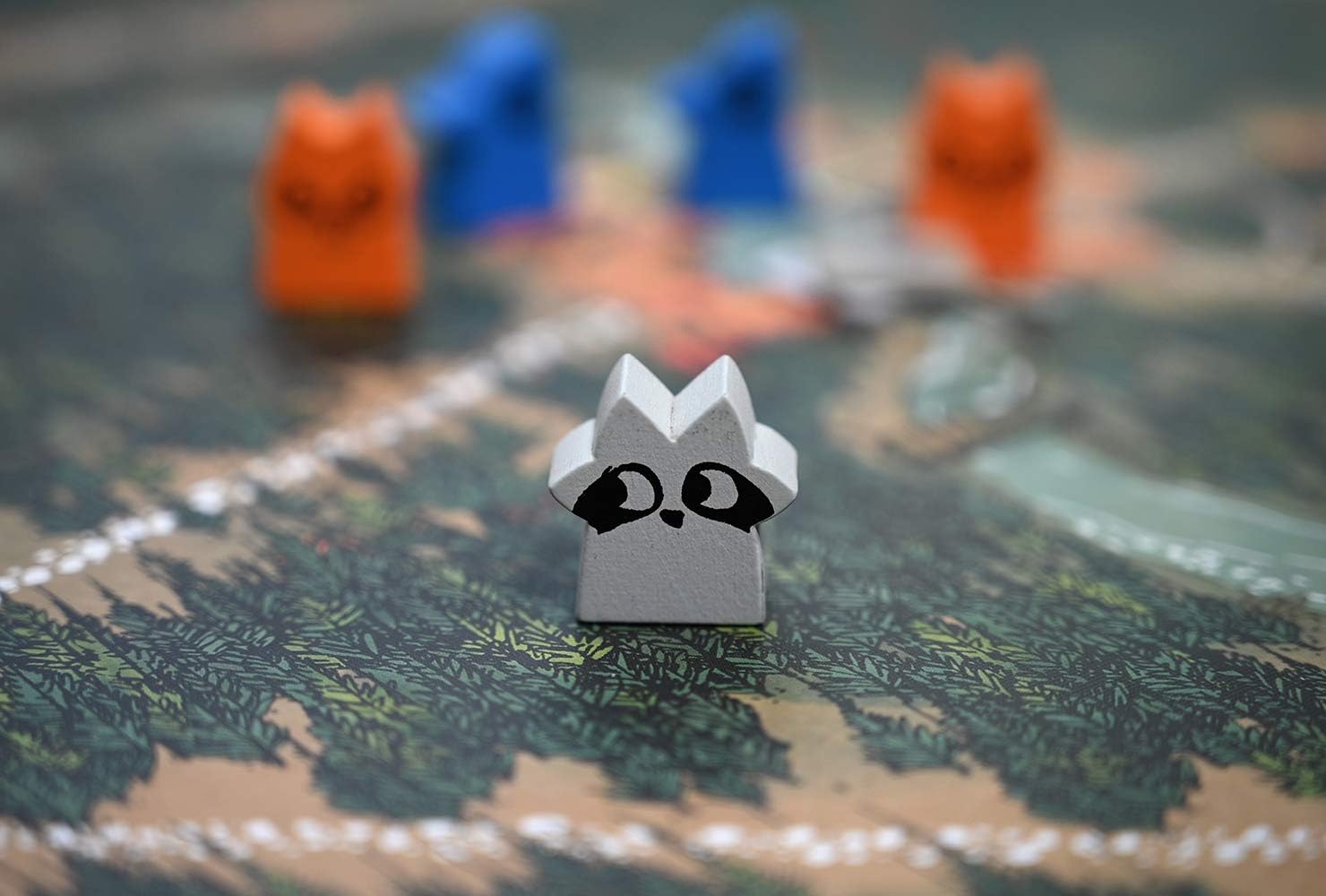
Root is a highly asymmetric board game set in a lush woodland realm, where players take on the roles of different factions vying for control and dominance. Each faction has its unique abilities, goals, and playstyles. Here’s a detailed guide on how to play:
Setup
- Place the game board in the center and distribute faction boards to each player based on their faction choice.
- Set up the board based on faction-specific instructions, including placing warriors, buildings, and tokens.
- Shuffle the Event Cards and place them in a draw pile.
- Shuffle the Crafting Cards and place them in a face-down deck.
- Determine the start player (usually the player who most recently visited a forest).
- Each faction starts with specific resources, which can include warriors, buildings, and crafting cards.
Gameplay
Root is played in turns, with each player taking their entire turn before moving to the next player. A player’s turn consists of the following steps:
1. Birdsong Phase
- Resolve faction-specific abilities that trigger at the start of your turn.
2. Daylight Phase
- Players can take a combination of up to three actions in any order:
- Recruit: Spend resources to place warriors on your faction board.
- Move: Move warriors between clearings connected by paths. Some factions have special movement rules.
- Battle: Initiate battles with opposing warriors in the same clearing.
- Build: Spend resources to place buildings like sawmills and recruiters in clearings.
- Organize: Execute special faction-specific abilities.
3. Evening Phase
- Draw one card from the Event Deck and resolve its instructions.
- Players with more than five cards must discard down to five.
4. Score Victory Points
- Check for any victory points gained through faction-specific abilities, control of clearings, or completed objectives.
5. Pass the Turn
- Once you’ve completed your turn, pass the play to the next player clockwise.
Winning the Game: Each faction has its unique win conditions, which can include controlling certain clearings, reaching a specific number of victory points, or fulfilling objectives. The first player to achieve their faction’s win conditions wins the game.
It’s important to note that the asymmetric nature of “Root” means each faction plays differently, with its own strategies and objectives. Players should be familiar with their faction’s abilities and goals to make strategic decisions throughout the game.
For the official rules, see the link below:
Factions in Root
Here’s an overview of the base game factions in “Root”, with a quick rundown of the playstyle as well as the factions’ objective in game.
Marquise de Cat (The Cats)
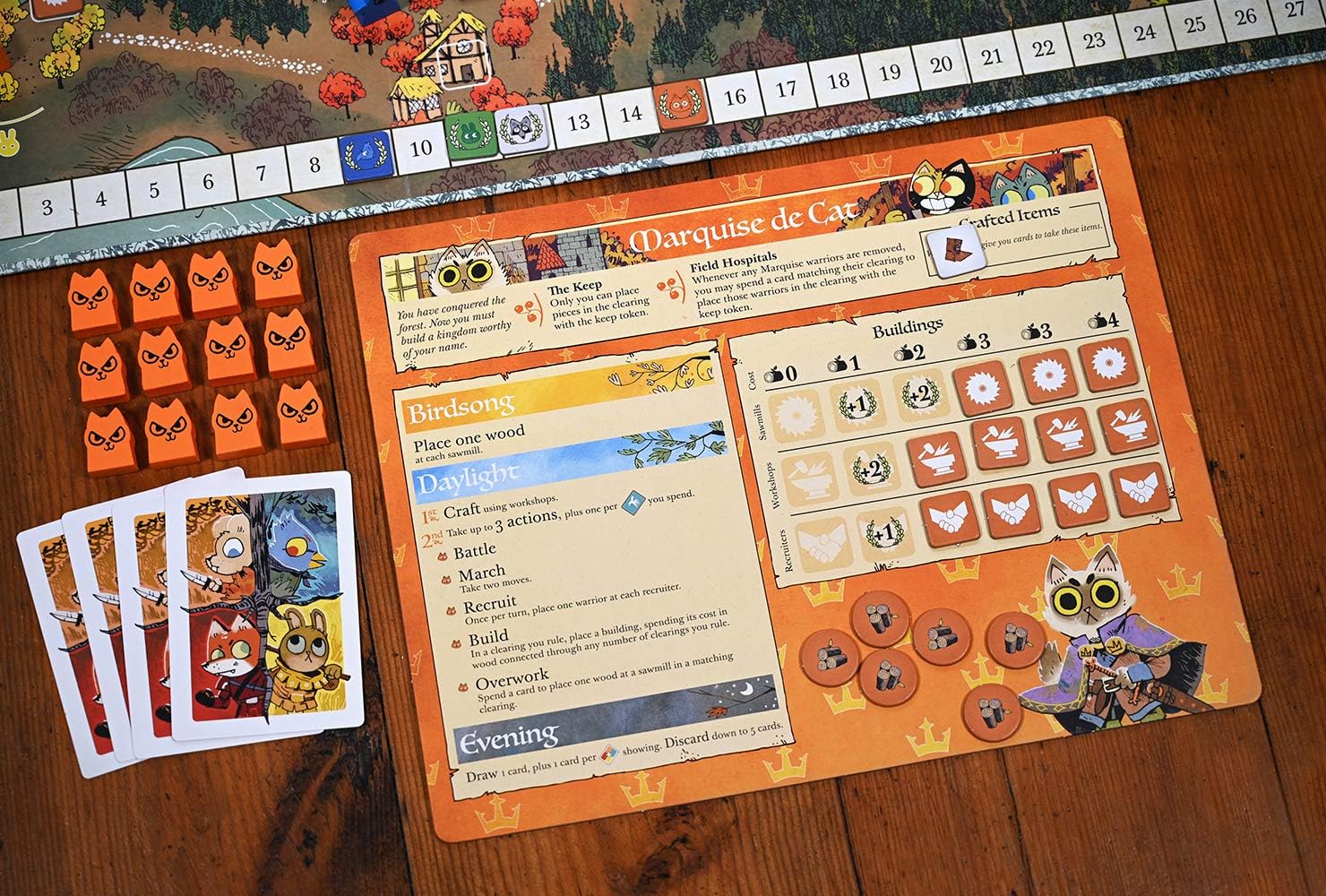
- Playstyle: The Marquise is all about expanding and maintaining dominance. They start with many warriors and aim to build workshops, sawmills, and recruiters to produce resources and control clearings.
- Objective: The Marquise seeks to maintain control of a certain number of clearings and maintain dominance by building structures.
Eyrie Dynasties (The Birds)
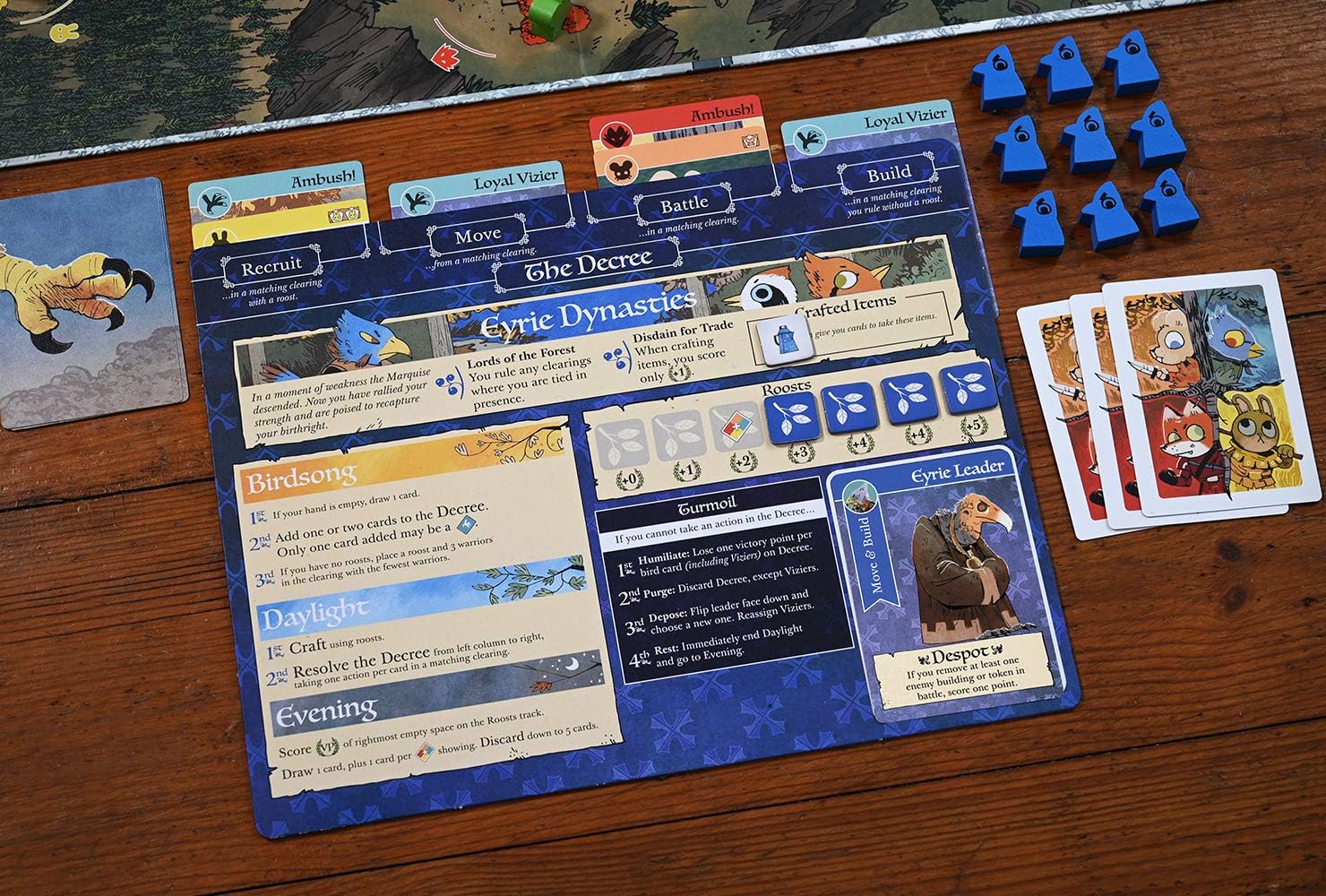
- Playstyle: The Eyrie Dynasties are an aristocratic society with a strict leader sequence. They focus on decree cards, which dictate their actions each turn. Deviation from the decree can result in turmoil.
- Objective: The Eyrie aims to fulfill the decrees and expand its roosts across the woodland.
Woodland Alliance (The Alliance)
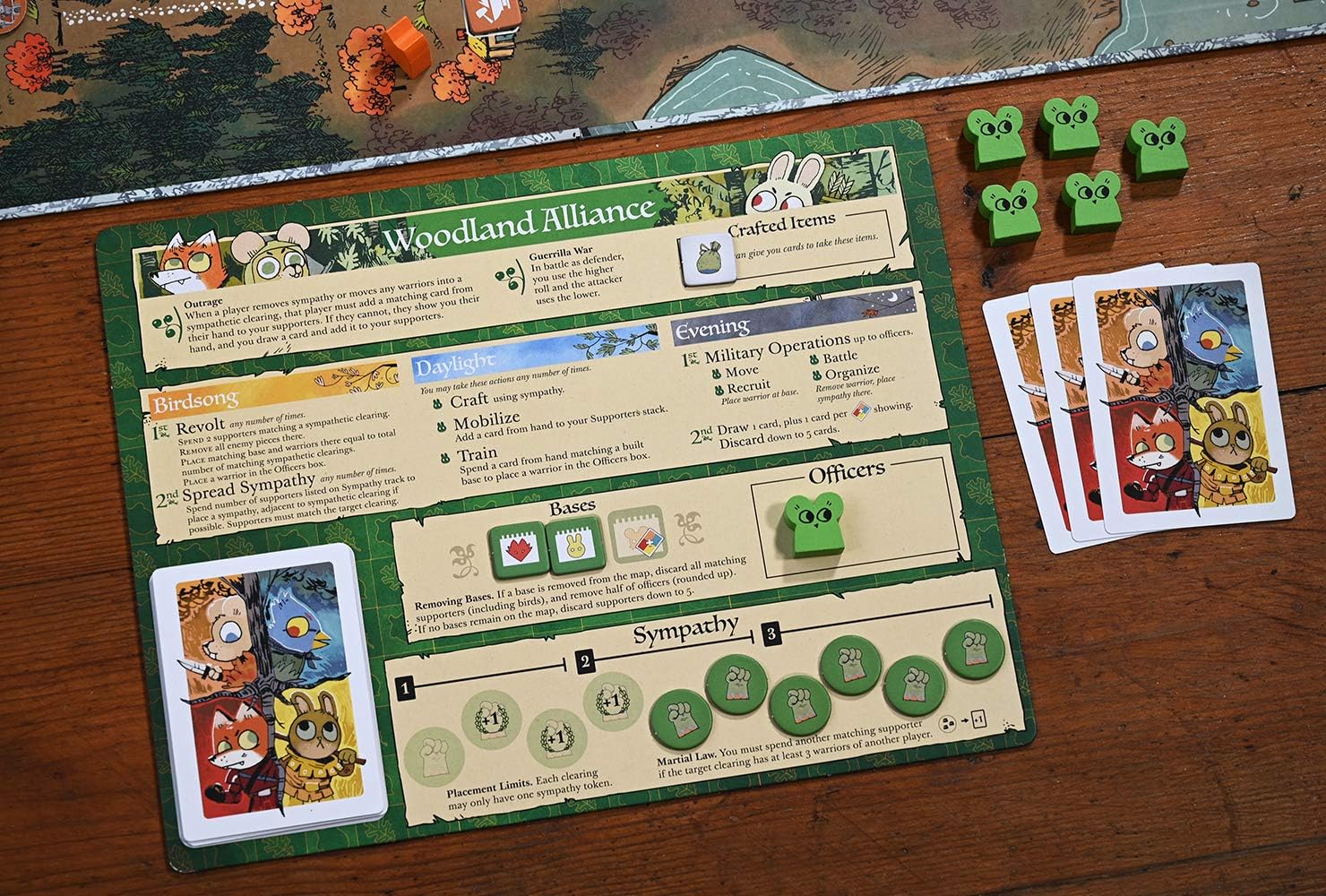
- Playstyle: The Woodland Alliance is a hidden faction that relies on spreading sympathy tokens among clearings to inspire a revolt. Their forces grow as sympathy spreads.
- Objective: The Alliance’s goal is to reach a certain level of sympathy, instigate a revolt, and control clearings.
Vagabond (The Vagabond)
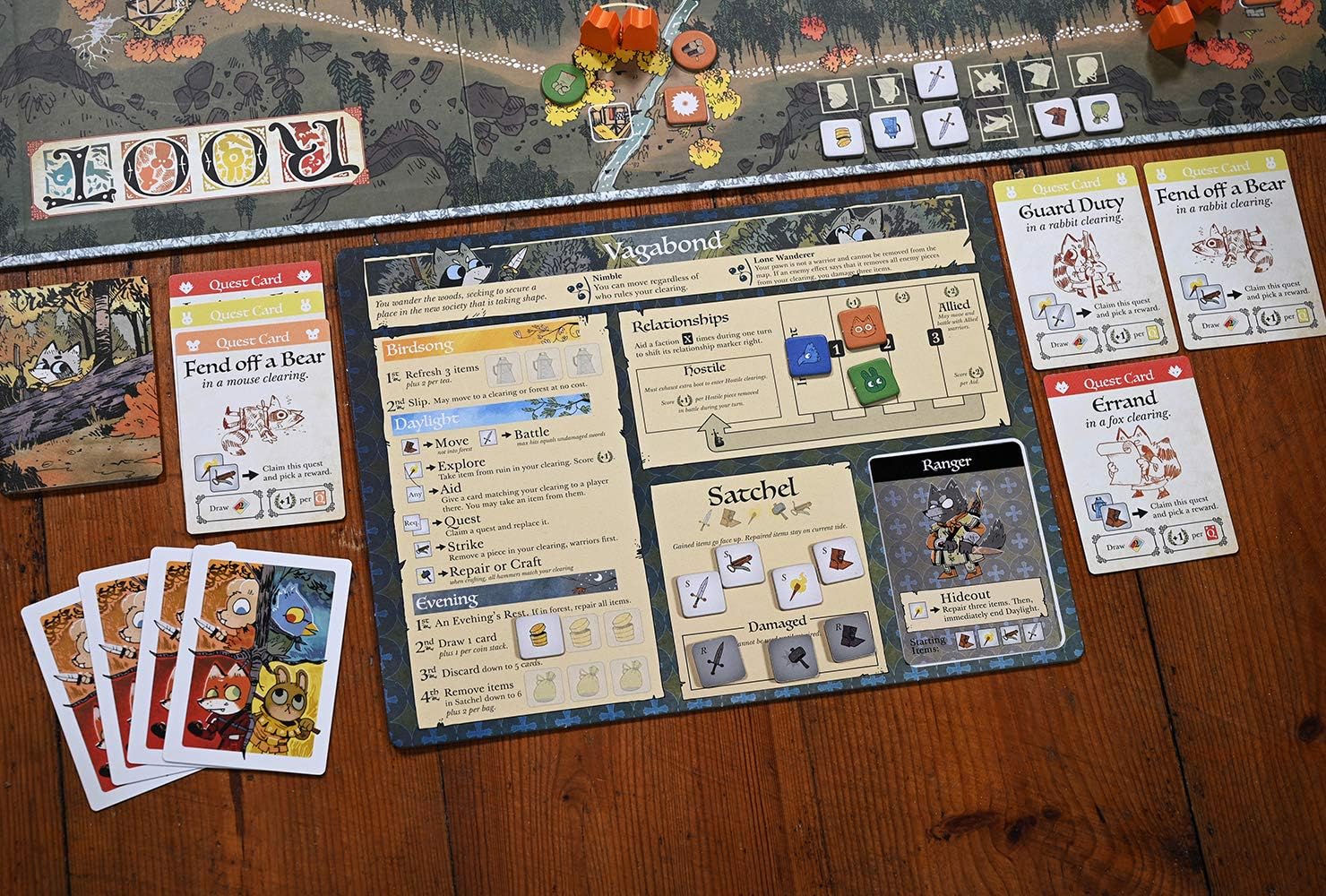
- Playstyle: The Vagabond is a single character who roams the woodland with unique abilities. They interact with other factions, forging alliances or attacking for items.
- Objective: The Vagabond’s objectives include completing quests, helping factions, or defeating warriors and leaders for victory points.
Strategies for winning the game
· Know Your Faction: Familiarize yourself with your faction’s special abilities, strengths, and weaknesses. Understanding your faction’s core mechanics is essential to formulating a winning strategy.
· Adapt to the Situation: “Root” is a highly interactive and dynamic game. Be flexible and adapt your strategy based on the actions of other players and the evolving game state.
· Complete Your Objectives: Each faction has specific objectives that lead to victory. Focus on achieving these objectives while thwarting your opponents’ progress. Prioritize actions that directly contribute to your win conditions.
· Build Synergy: Utilize your faction’s abilities and cards to create synergistic combinations. Look for ways to maximize the impact of your actions and cards by chaining them together strategically.
· Maintain Control: Control of clearings is crucial for several factions. Ensure you have a presence in key clearings and work to expand your influence while denying opponents access.
· Resource Management: Efficiently manage your resources, including warriors, buildings, and cards. Balance expansion and defense, and avoid overextending yourself.
· Battles and Conflict: Engage in battles strategically. Consider the odds, the potential rewards, and the risks before initiating combat. Winning battles can disrupt opponents’ plans and secure your control of clearings.
· Interact with Other Factions: Build alliances or make temporary agreements when it benefits your faction. The Vagabond, in particular, can form alliances for mutual gain.
· Timing Matters: Be mindful of the timing of your actions and card plays. Timing can make a significant difference, especially in battles or when triggering key abilities.
· Watch for the Dominant Foe: Keep an eye on the faction that’s closest to winning. If another player is on the verge of victory, consider targeting them to slow their progress or disrupt their plans.
· Diversify Your Strategy: While focusing on your faction’s primary objectives, consider diversifying your strategy to score points from other sources, such as crafting cards or building structures.
· Balance Offense and Defense: Balance your offensive actions with defensive measures to protect your holdings and maintain control over key areas of the board.
· Stay Informed: Pay attention to the game state, the factions’ progress, and the available options. Being informed helps you make informed decisions.